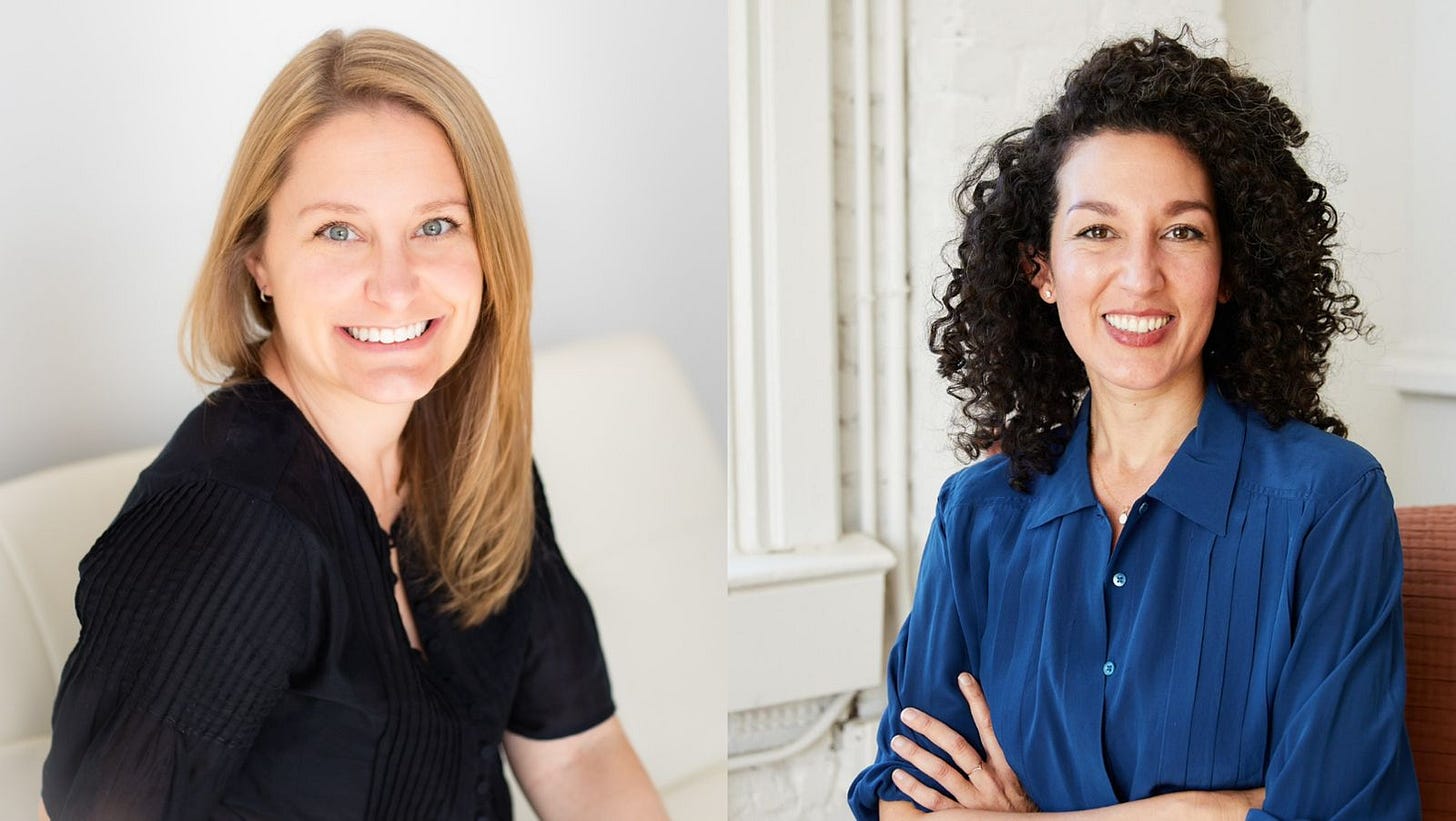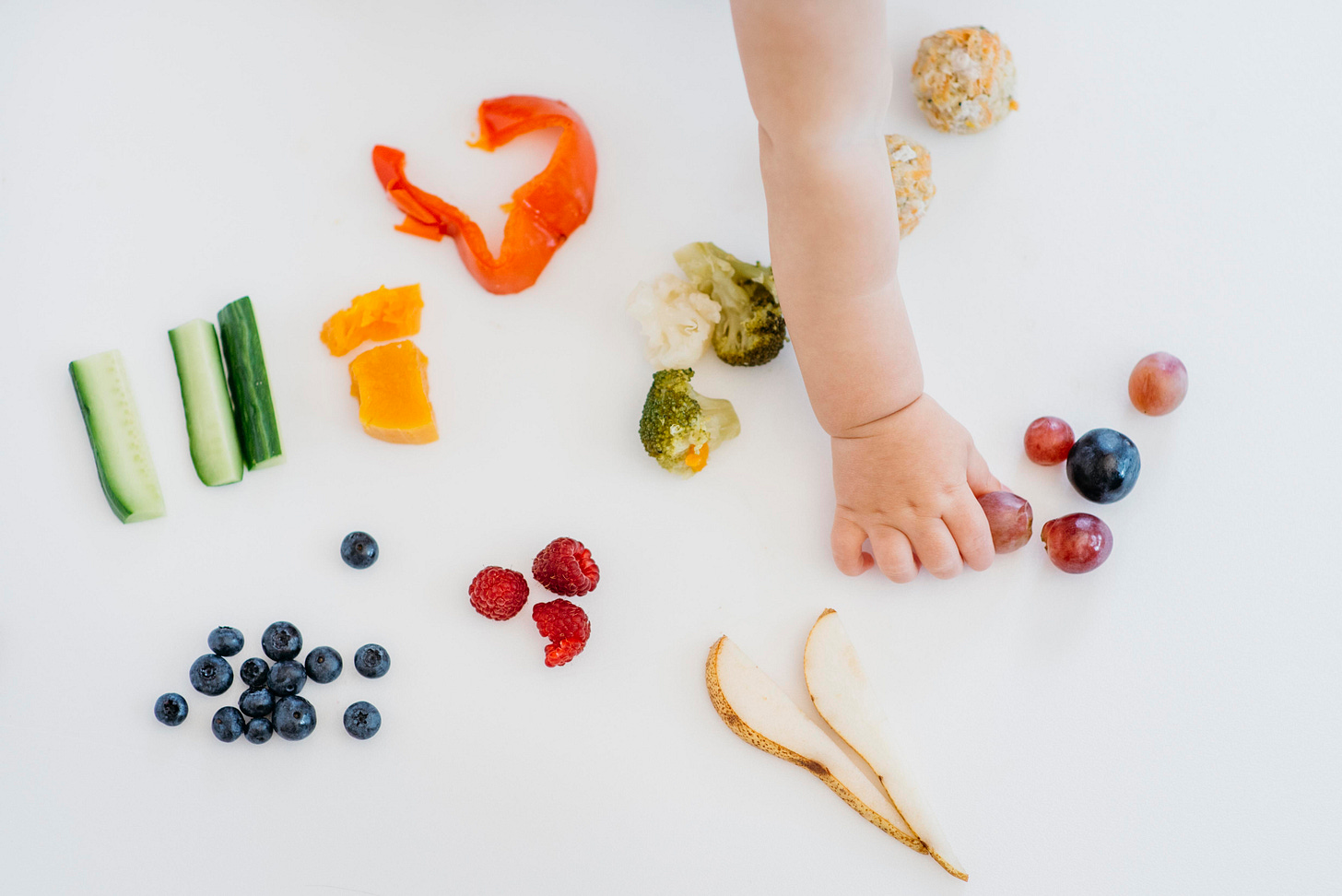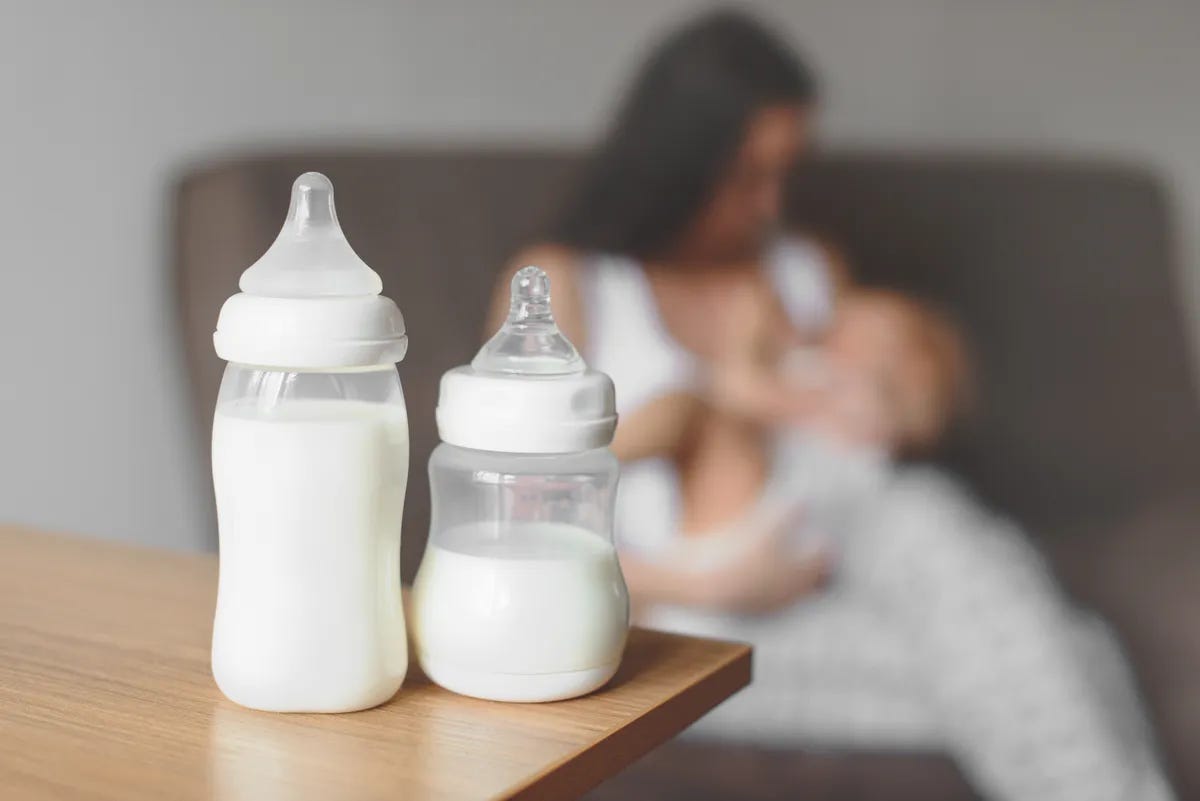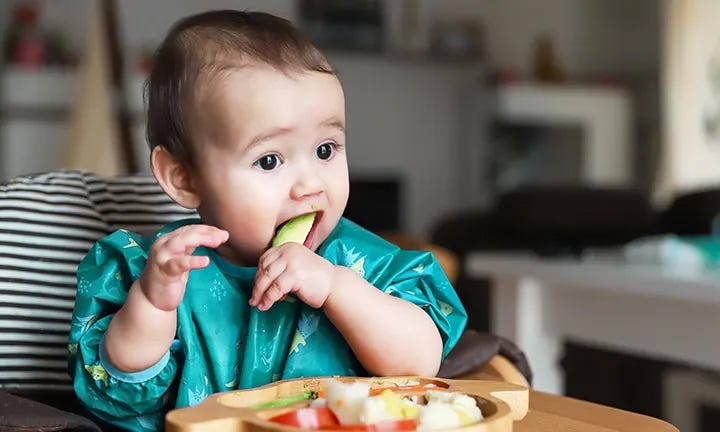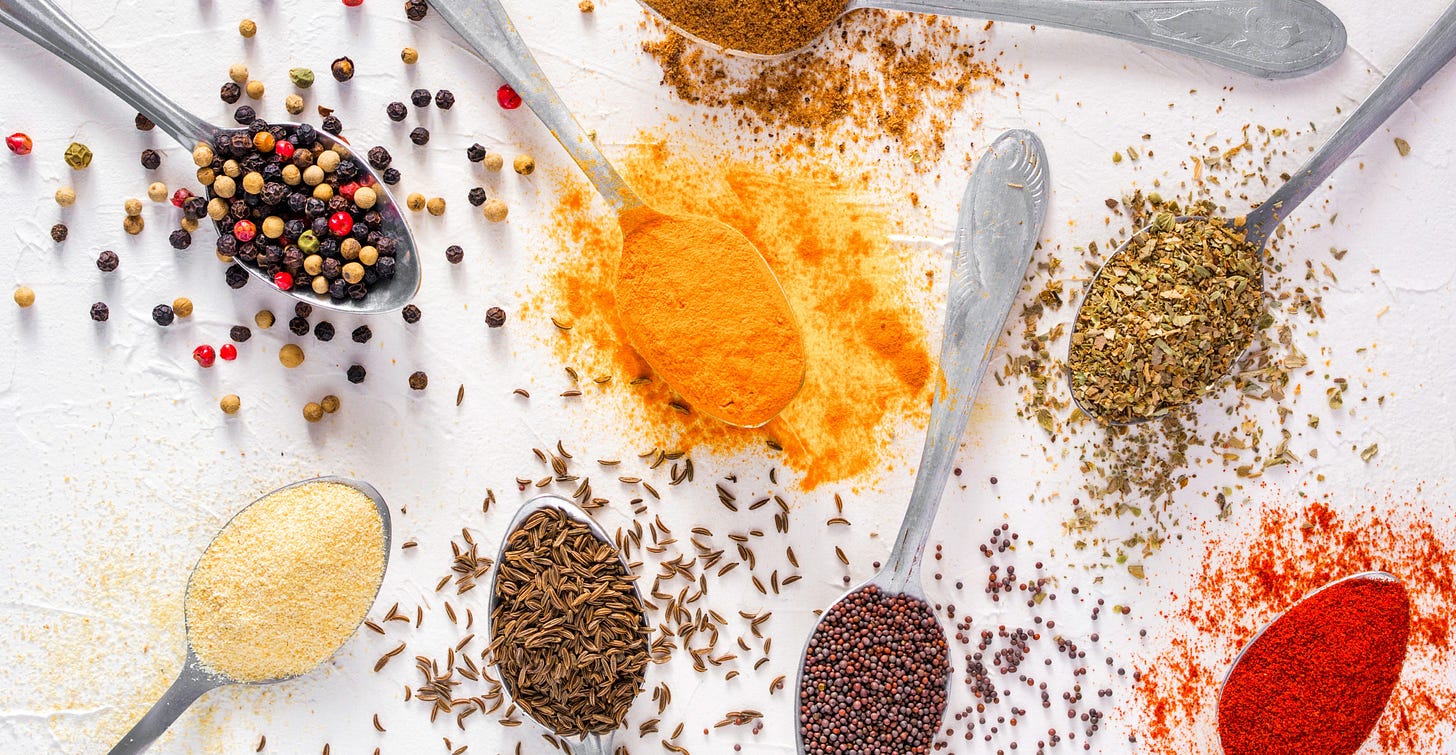[Blog] Ep 61. Solid Starts' Expert Guide to Baby-Led Weaning
ft. Kimberly Grenawitzke and Kary Rappaport
Baby-led weaning (BLW) is more than a feeding approach—it’s a parenting mindset. In a world where Indian families are deeply rooted in tradition and often measure feeding success by “how much the baby ate,” the concept of letting babies lead their feeding journey can seem radical. But BLW is backed by evidence, rooted in tradition, and supported by experts worldwide including the team at Solid Starts.
In this episode of The Modern Indian Parent Podcast, host Sanchita Daswani sits down with Solid Starts’ senior members Kim Grenawitzke and Kary Rappaport—both pediatric occupational therapists and feeding/swallowing specialists—to demystify baby-led weaning and offer real, actionable guidance to help parents feel confident.
61. Solid Starts' Expert Guide to Baby-Led Weaning
In this episode, host Sanchita Daswani is joined by pediatric feeding specialists Kary Rappaport and Kimberly Grenawitzke from Solid Starts. They dive deep into baby-led weaning, a revolutionary approach that empowers children to take charge of their food journey. Learn about the signs of readiness, the importance of introducing a variety of textures, a…
Meet the Experts: Kim & Kary
Kim and Kary bring over 15 years of experience each as pediatric occupational therapists. Their journey into the world of baby-led weaning began in hospitals, working with medically fragile infants. Their shared vision? Make feeding less stressful and more joyful for families. Their work laid the foundation for Solid Starts’ widely trusted courses, app, and resources used by parents and professionals across the world.
What Is Baby-Led Weaning?
Baby-led weaning is not new. In fact, it's how babies were fed before commercial baby food was industrialized. As Kary explains, BLW means letting the baby take the lead, whether it's with a spoon, mashed food, or finger foods. The focus isn't on skipping purees, but on letting the baby self-feed in a developmentally appropriate way.
When Is Baby Ready to Start Solids?
Kary emphasizes that developmental readiness is more important than age. She outlines three key signs:
Baby can sit upright with little support
Baby can use their hands to bring food to their mouth
Baby shows interest in food and mealtimes
Kim points out that most babies show these signs around six months but it could be a little earlier or later, depending on the baby.
Is It Safe to Start Finger Foods Right Away?
Yes! In fact, babies are safest when starting solids at six months due to strong protective reflexes like gagging and tongue-thrusting. These mechanisms prevent choking, especially when babies self-feed. Delaying finger foods can actually reduce the opportunity for safe skill-building.
What If Baby Takes a Big Bite?
This is one of the most common fears among parents starting baby-led weaning and completely understandable. But as Kary explains, the key is to trust your baby’s instincts and reflexes.
When babies self-feed, Kary says, their brain begins preparing for the experience the moment they see, reach for, and grasp the food. This helps activate protective oral reflexes that keep them safe. “It’s not a bad thing if your baby bites off a big piece—it’s actually how they learn,” she reassures.
Kim adds that bigger bites often look scarier than they are. “Choking is more likely with small, round, hard or slippery foods like nuts or grapes, not large, soft bites,” she explains. The airway is narrow about the size of a drinking straw so larger pieces typically can’t block it. What usually happens instead is that baby either spits the food out or swallows it with the help of their naturally stretchy food pipe.
Kim and Kary both emphasize:
Let baby feed themselves (never place food directly in their mouth)
Stay calm if they gag or spit—this is a protective mechanism
Avoid known choking hazards like whole nuts, raw carrots, or firm apple slices
And perhaps most importantly, Kary reminds parents: “Spitting is not failing. Spitting is learning. It's a life-saving skill.”
When Do Babies Start Actually Eating?
Kim explains that the journey looks different for every baby. Some take weeks or months to start swallowing food, while others seem to “get it” from day one. Regardless, practice is key.
Kary reminds parents that breast milk or formula remains the baby’s primary source of nutrition during the first year. So even if a baby swallows very little at the table, they’re still getting all they need.
What If My Family Doesn’t Support BLW?
In many Indian households, feeding is a deeply emotional, cultural ritual and change is often met with resistance. So what do you do when your baby-led weaning approach is met with judgment, confusion, or concern?
Kary recommends starting with empathy. “It’s hard when someone you love believes what you’re doing might harm your baby. But often, their concern comes from love, not from science.” She encourages parents to calmly explain that feeding recommendations have evolved.
Kim suggests validating your family’s role. Instead of defending BLW, include them in the process: show them your baby’s cues, the way they chew and explore, and the joy they experience at the table.
If they’re still resistant, Kary says to remember this: “Breastmilk or formula is still the baby’s main nutrition source for the first year. Even if they don’t eat anything at the table today, they’re not going hungry.”
Above all, Kim and Kary encourage creating a calm, joyful mealtime environment where pressure is low and curiosity is high. Over time, even skeptical grandparents may be won over by the baby’s progress.
How Do We Know Baby Ate Enough?
Kim says the measure of a successful meal is not how much the baby ate but what they experienced. Did they touch the food? Sit at the table? Play with the textures? All of that counts as learning. Kary compares it to learning soccer: you don’t expect a goal on day one. First comes showing up, then watching others, then slowly participating. Mealtimes are the same.
It’s not about quantity. Just like learning to walk, eating is a process with many small milestones.
Do We Need to Offer One Food for Three Days?
Kary debunks the outdated “three-day rule,” explaining there’s no scientific basis for it except when introducing allergens. She encourages parents to expose babies to a variety of foods regularly, even if not daily.
When and How to Introduce Allergens?
Kim explains that the latest research clearly supports introducing common allergens early and often. This helps reduce the risk of developing food allergies, not increase it.
She recommends starting with the top three priority allergens:
Egg
Peanut
Dairy
Once your baby shows signs of developmental readiness (usually around 6 months), Kim suggests introducing a small amount of the allergen over three consecutive days:
Day 1: A tiny taste (¼ tsp)
Day 2: A little more (½ tsp)
Day 3: A full teaspoon
This helps observe any reactions while gently exposing the body to the food.
Kary adds that keeping allergens in the baby’s diet regularly, ideally 2–3 times per week, is just as important as introducing them early. “The research shows that continued exposure through age five offers the best protection,” she explains.
For babies at higher risk of allergies (especially those with severe eczema or an existing food allergy), Kary recommends consulting a pediatrician or allergist. In some cases, allergens may be introduced as early as 4 months, even before starting solids broadly.
Worried about reactions? Kim advises keeping an antihistamine at home, and some parents even choose to introduce new allergens in their doctor’s office for peace of mind.
Finally, Kim reminds parents: “Shellfish is the one allergen that can be delayed, especially if it’s not a part of your family’s regular diet. But the others especially egg, peanut, and dairy are nutritious, important, and should be introduced confidently.”
Can We Add Spices to Baby’s Food?
Kim encourages parents to introduce the flavors their family eats. Spices like turmeric, coriander, and cumin are all safe and even beneficial. Just go slow and observe your baby’s response.
Kary advises separating spices that add heat (like chili or pepper) from those that add flavor, starting with low amounts and gradually increasing. She recommends pairing spicy foods with cooling options like yogurt and modeling how to manage spicy sensations.
What Is FPIES?
Kim defines FPIES (Food Protein-Induced Enterocolitis Syndrome) as a rare, delayed food allergy that usually presents with vomiting or diarrhea a few hours after eating a trigger food. Avocado, egg, sweet potato, and wheat are common culprits.
Kary emphasizes that FPIES is rare and most reactions babies have are not allergies but normal digestive adjustments. She discourages parents from pulling foods out of their baby's diet unnecessarily.
What If Baby Refuses to Put Food in Their Mouth?
Kary says this may happen if the baby isn’t quite ready or if they've been pressured. She recommends taking a step back, reducing pressure, and modeling eating. Sometimes, eating in a new location or holding the baby during meals helps reset the experience.
Kim suggests that if you're offering purees, make sure you're also eating them too—babies learn by watching!
What If Baby Only Takes One Bite and Throws the Food?
Kim says throwing food usually means “I’m done.” The meal might have been enough stimulation or the baby could be too hungry to practice a new skill. Offering a breast or bottle before solids can help.
Kary adds that sometimes, babies just need ideas for what else they can do with the food. She suggests tapping the food, mashing it, or modeling new actions to re-engage baby. But if baby is clearly done, it’s okay to end the meal.
Final Takeaway
“Don’t panic,” Kary says. “Let your baby lead.”
Kim reminds us: mealtimes should be joyful, not stressful.
When we focus less on how much and more on how it feels, we empower babies to build lifelong positive relationships with food.
61. Solid Starts' Expert Guide to Baby-Led Weaning
In this episode, host Sanchita Daswani is joined by pediatric feeding specialists Kary Rappaport and Kimberly Grenawitzke from Solid Starts. They dive deep into baby-led weaning, a revolutionary approach that empowers children to take charge of their food journey. Learn about the signs of readiness, the importance of introducing a variety of textures, a…



